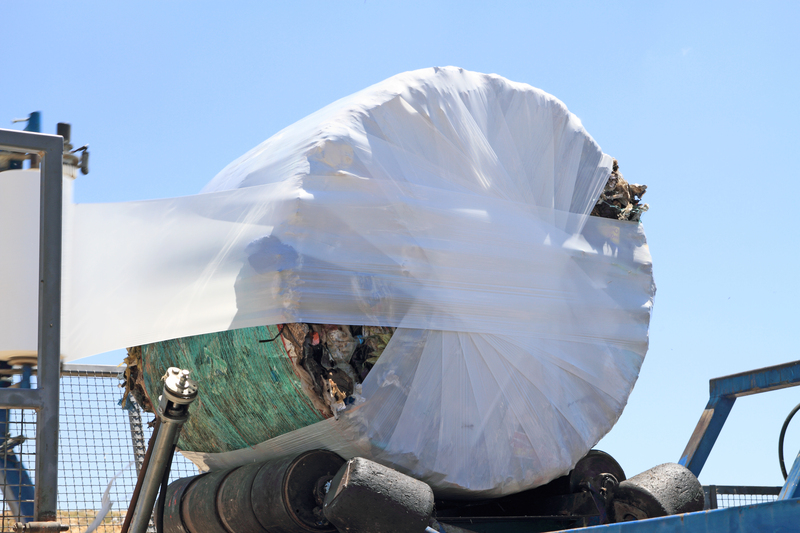A Beginner's Guide to PPE Waste Responsibility
In a rapidly evolving world where health and hygiene have become a top priority, the use of Personal Protective Equipment, or PPE, has grown exponentially. From surgical masks and gloves to face shields and gowns, PPE has played a pivotal role in keeping individuals safe from contaminants and infectious diseases. However, the increased demand has led to a new concern: PPE waste management and environmental responsibility.
If you're new to the subject, understanding the importance of sustainable PPE waste practices is crucial--not just for your safety, but also for the planet's future. This comprehensive guide will help you embark on your journey toward responsible PPE waste disposal and management.
What is PPE and Why is Its Waste a Problem?
Personal Protective Equipment (PPE) refers to clothing and devices designed to protect the wearer from injury or infection. Examples include:
- Masks (surgical, N95, cloth)
- Gloves (latex, nitrile, vinyl)
- Face shields and goggles
- Gowns and aprons
- Shoe and head covers
Due to the unceasing threat of pandemics and infectious diseases, millions of people worldwide regularly use PPE. The majority of PPE is designed for single use, and these items are often made from non-biodegradable materials such as plastics and synthetic fabrics.
The problem? PPE waste contributes immensely to environmental pollution, clogging landfills, polluting oceans, and threatening wildlife. Furthermore, improperly disposed PPE can pose a risk of disease transmission and can harm sanitation workers or members of the public.
Understanding PPE Waste Responsibility
So, what exactly is PPE waste responsibility? In simple terms, it refers to the ethical and legal obligation of individuals and organizations to dispose of used PPE in a safe, effective, and environmentally friendly manner. Everyone, from healthcare professionals to the general public, shares in this responsibility. Practicing sustainable PPE waste management helps:
- Reduce public health risks
- Protect the environment
- Limit disease transmission
- Maintain cleaner communities
Acting responsibly isn't just about following rules; it's about acknowledging the impact of PPE waste on the planet and proactively striving to mitigate it.

Why Is PPE Waste Management Important?
Here are several key reasons why effective PPE waste disposal is crucial:
- Environmental Preservation: Most single-use PPE is non-biodegradable and can persist in the environment for decades, harming landscapes and water bodies.
- Wildlife Protection: Discarded gloves and masks often end up in the wild, where animals may ingest or get entangled in them, threatening their survival.
- Public Health Safety: Used PPE can carry harmful pathogens. Poor handling can facilitate the spread of infectious diseases.
- Resource Conservation: Minimizing PPE waste also helps conserve resources required to produce and dispose of these items.
Learning the basics of PPE waste management for beginners is the first step toward responsible usage and disposal.
The Types of PPE Waste
Understanding different types of PPE waste is fundamental to proper handling and disposal. Generally, PPE waste includes:
- Contaminated PPE: Items used in medical facilities or by those exposed to infection risk. Requires special handling.
- Non-contaminated PPE: General use items not exposed to pathogens, such as masks worn in non-clinical settings.
- Recyclable PPE: Some PPE can be recycled, but only if clean and accepted by local recycling programs.
Identifying the category of your PPE waste is crucial for choosing the correct disposal route.
Best Practices for PPE Waste Disposal
1. Correct Segregation of PPE Waste
Segregation is the cornerstone of responsible PPE waste disposal. Here's how to do it right:
- Keep contaminated PPE separate from regular waste. Use clearly labeled bins--typically red or yellow--for biohazardous materials.
- Dispose of non-contaminated PPE in general waste only if local regulations allow. Check with your municipality for PPE-specific disposal guidance.
- Never mix PPE waste with recyclables unless expressly approved by your local waste authority.
2. Safe Handling and Storage
- Always wear gloves when handling used PPE, especially if contaminated.
- Seal used PPE in leak-proof bags to prevent accidental exposure.
- Keep waste storage areas clean, secure, and out of reach of pets or children.
3. Responsible PPE Recycling
- Check if your local recycling center accepts certain PPE waste, such as unopened or unused items and clean face shields.
- Many masks and gloves are not recyclable in standard curbside bins, but specialty recycling programs may exist for bulk or institutional waste.
- If available, participate in PPE recycling programs by organizations or manufacturers.
4. Incineration and Specialized Treatment
- For medical or contaminated PPE, the safest method is usually high-temperature incineration, which destroys pathogens.
- Healthcare settings must follow government regulations for biohazardous waste disposal, usually involving registered medical waste contractors.
5. Reducing and Reusing PPE Where Possible
- Consider reusable PPE options, such as washable cloth masks or gowns, when possible and appropriate.
- Follow manufacturer and health authority guidelines for the cleaning and reuse of PPE to extend lifespan and reduce waste.
Steps to Take as an Individual
Even if you're not in a healthcare setting, your actions matter. Here are simple steps you can follow to be a responsible member of your community:
- Reduce reliance on single-use PPE: Only use what you need, and opt for reusable alternatives when it's safe to do so.
- Educate yourself and others: Stay up-to-date with local guidelines for PPE waste disposal and share this knowledge with family and friends.
- Dispose responsibly: Never litter PPE. Always use a trash bin and, if possible, separate contaminated from general waste.
- Support green initiatives: Choose brands invested in sustainable PPE production and disposal, and encourage others to do the same.
PPE Waste Management for Organizations
Workplaces, schools, and institutions have a greater responsibility when it comes to PPE waste. Here's how organizations can foster a sustainable PPE waste management system:
- Implement waste segregation policies: Provide clearly marked bins for PPE and biohazardous waste.
- Train staff: Ensure employees understand proper PPE disposal procedures and receive regular updates.
- Partner with certified waste handlers: Work with licensed medical waste contractors for safe collection and disposal.
- Encourage the use of reusable PPE: When possible, issue or subsidize reusable PPE that can be sanitized and reused.
- Monitor and audit waste streams: Track the amount and type of PPE waste generated to identify trends and areas for improvement.
Innovations in PPE Waste Solutions
With the mounting problem of PPE waste, many companies and institutions are spearheading new ways to address the issue.
- Biodegradable PPE: Some manufacturers are developing masks, gloves, and gowns from biodegradable materials.
- Recycling Programs: Initiatives, such as Terracycle, collect and recycle used PPE into plastic lumber and other products.
- Energy Recovery: Some waste-to-energy plants are harnessing incinerated PPE to produce electricity.
- Upcycling: Creative minds are repurposing PPE for use in construction materials, road surfacing, and art installations.
As technologies evolve, it's worth keeping an eye on local and global developments for even more effective solutions to PPE waste management.
Regulations and Guidelines for PPE Waste Disposal
Regulations for the disposal of PPE waste vary by country and region. However, some common recommendations include:
- WHO and CDC guidelines: Both organizations recommend segregating PPE waste at the point of use, followed by secure containment and transportation to designated disposal facilities.
- Local government ordinances: Always refer to your local public health authority for any specific mandates on PPE waste disposal, which may differ based on risk level or volume of waste.
- Occupational safety standards: Employers must ensure that the handling of PPE waste does not endanger workers or waste handlers.
Common Myths About PPE Waste Responsibility
-
Myth: "All PPE should go in the recycling bin."
Fact: Most PPE is made of complex materials unsuitable for standard recycling. Only recycle PPE if your facility or city specifically allows it. -
Myth: "Flushing PPE down toilets is acceptable."
Fact: Flushing masks, gloves or wipes can cause blockages and pollution. Always dispose of PPE in a trash receptacle. -
Myth: "PPE will decompose quickly in landfills."
Fact: PPE made of plastic can take hundreds of years to break down, causing long-lasting environmental harm.
Tips on Educating Others About PPE Waste
Spreading awareness is crucial. Share your knowledge with those around you by:
- Organizing community talks or workshops on PPE waste responsibility
- Distributing educational leaflets and infographics
- Actively posting about PPE waste solutions on social media
- Setting a good example--dispose of your PPE responsibly!

The Future of PPE Waste Management
As awareness of PPE waste responsibility grows, the future holds promise for more green innovation, stricter regulations, and improved community behavior. Sustainable PPE design, large-scale recycling programs, and a continued focus on education can help us minimize the environmental impact of necessary protective equipment.
Conclusion: A Step Toward a Cleaner Tomorrow
Practicing PPE waste responsibility isn't just a matter of compliance--it's a commitment to personal health, public safety, and planetary preservation. By educating yourself, adopting best practices, and encouraging others to do the same, you are taking a significant step toward a cleaner and safer world.
Remember, every piece of PPE disposed of responsibly matters. Begin your journey today: reduce, reuse, and recycle PPE waste wherever possible for a healthier future.



